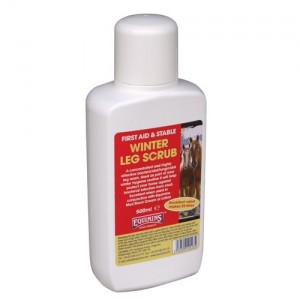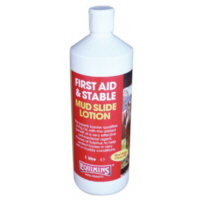Haynet Blog – Mud Fever
We’re delighted to be able to share with you a blog from Sam Hobden at Haynet. Haynet is a blogging site for the equestrian and country world, and shares many great blogs from horseaholics. We were excited when Sam got in touch with us about a blog she’d like to write for Haynet, all about mud fever and how she uses our Winter Leg Scrub and Mud Slide Lotion on her warmblood mare. The blog below is taken from the Haynet blog (with permission, obviously!), but we wanted to share on here too, just in case you didn’t see it! Thank you Sam…and enjoy!
Mud fever, greasy heel, dew poisoning, pastern dermatitis or whatever you choose to call it, I hate it and my horse really hates it! With winter in full swing, paddocks are getting poached and gateways resemble bogs which only means one thing in my equestrian eyes…mud fever.
The Condition
This is a painful condition that mainly affects horse’s lower limbs and it thrives in cold and wet conditions which we know is very common all over the United Kingdom.
Mud fever can range from a mild skin irritation to very painful, infected sores commonly found on the back of the pasterns and heels of a horse. However the disease can actually affect the whole body if it really gets out of hand and not treated. The sores are the obvious symptom but it can cause also oedema which normally results in some lameness for the horse. It can also occur along the backs of horses that are kept outside without rugs, which is known as rain scald or rain rash.
The crusty scabs on the inflamed skin discharge serum, causing the hair to matt, giving the coat a rough, ungroomed appearance. Mud fever scabs also tend to be dark in colour which are easy to detect, especially horses with white socks where mud fever can be very prevalent. With severe cases, the skin at the back of the pastern may split open, producing deep horizontal cracks, commonly called cracked heels. Infection can enter these areas of damaged skin, resulting in a hot, swollen and painful legs which can lead to severe lameness. So yes, this really is a miserable condition for horse and its owner to deal with.
How To Treat
This can be the million dollar question for all horse owners that are dealing with mud fever. Speak to any other horse owner and they will have their miracle solution….which have never worked for my horse. With my own delicate warmblood I have been battling the greasy heel for around eleven winters now. Every method and product you can name, I can guarantee you I have tried. That poor horse has been smeared with so many products ranging from Manuka honey to Sudocreme, from tea tree oil, pig oil to goose fat and from udder cream to powder… the list goes on. He has been washed from baby shampoo to Hibiscrub and then blow dried to make sure his sore legs are completely dry. This horse has more pairs of turnout boots than I care to add up. Yet, the mud fever still persists. Then there is the question whether to wash their legs or not? I have done both and to be honest it still never made a difference. The vet has been called out on numerous occasions and their advice was to take him off the ground completely and use an anti-biotic cream on prescription. Now this has worked but then I had one miserable horse who wasn’t turned out for weeks on end and then swelled up from the process of being in! So that was it, no effective and practical cure to mud fever, or so I thought…..
The Cure?
 Last autumn my warmblood had the familiar scabs and swelling to his pasterns which again showed the mud fever had taken hold despite turning him out with barrier protection. I visited a local saddlery to purchase yet more products, to try and levitate the painful sores for him. Pretty much every product that was stocked on the shelves I recognised and had purchased over the years with not a huge amount of success. I noticed a couple of new products that I hadn’t used before so decided to give these bottles of lotion a chance and headed back to the yard.
Last autumn my warmblood had the familiar scabs and swelling to his pasterns which again showed the mud fever had taken hold despite turning him out with barrier protection. I visited a local saddlery to purchase yet more products, to try and levitate the painful sores for him. Pretty much every product that was stocked on the shelves I recognised and had purchased over the years with not a huge amount of success. I noticed a couple of new products that I hadn’t used before so decided to give these bottles of lotion a chance and headed back to the yard.
The new product I bought was a Winter Leg Scrub which you mix with water and sponge on to the affected legs leaving on without rinsing. You can use this each time they come in, or I have found it ideal using it a couple of times a week. It also has the most wonderful smell! The other product was Mud Slide Lotion which has very similar properties to pig oil but this also has flowers of sulphur which is a super anti-bacterial agent. This I used on my horses clean and dry legs before turning him out into the muddy paddock.
 After about ten days I noticed how his pasterns were not swollen anymore and with a thorough fingertip search through his feathers and around all four legs, he was declared mud fever free! This is unheard of for my horse to be clear of this condition in the middle of winter. So I have one happy horse and I am one extremely happy owner. I am continuing to wash his legs in the Winter Leg Scrub a few times a week and using the Mud Slide Lotion as a barrier when being turned out. Despite the paddocks having mud which is deep in places, his legs are dermatitis clear.
After about ten days I noticed how his pasterns were not swollen anymore and with a thorough fingertip search through his feathers and around all four legs, he was declared mud fever free! This is unheard of for my horse to be clear of this condition in the middle of winter. So I have one happy horse and I am one extremely happy owner. I am continuing to wash his legs in the Winter Leg Scrub a few times a week and using the Mud Slide Lotion as a barrier when being turned out. Despite the paddocks having mud which is deep in places, his legs are dermatitis clear.
I feel overall it is trial and error with this condition and what treatment your horse responds too. I am also a great believer to keep an open mind when treating any horse ailments. However, I have tried so many methods over the years trying to clear mud fever without any success. Well this is my cure and it is a huge relief to me (and him) that I won’t be having to smear his legs in sticky honey or wrapping them in cling film anymore.
By Samantha Hobden
www.hay-net.co.uk

 Equimins specialises in producing natural horse supplies, products and supplements for the major areas associated with caring for a horse. All products are proudly made in the UK and excellent specification quality products are of paramount importance. Using this blog we want to share some of the knowledge we have gained through nearly 30 years of experience.
Equimins specialises in producing natural horse supplies, products and supplements for the major areas associated with caring for a horse. All products are proudly made in the UK and excellent specification quality products are of paramount importance. Using this blog we want to share some of the knowledge we have gained through nearly 30 years of experience. 


